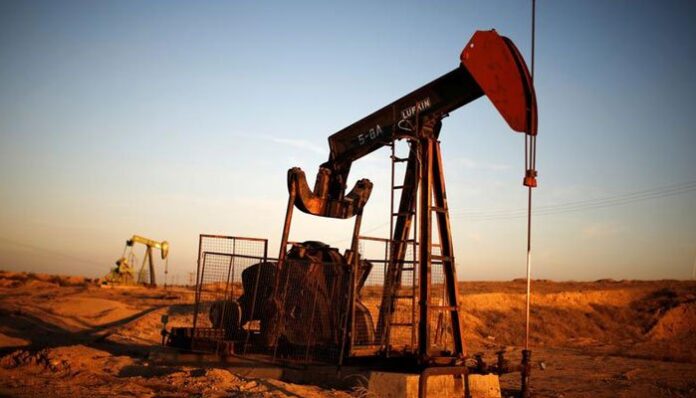ISLAMABAD: Crude oil futures surged on a week-on-week (WoW) basis after registering a minor dip in the preceding week.
Both global benchmarks – Brent and West Texas Intermediate (WTI) – have recorded an increase in nine out of the last 10 weeks. However, major oil benchmarks of Opec+, including Opec Basket, Arab Light and Russian Sokol, are keeping the bullish bias intact and closed the 10th straight week on a positive note.
Oil prices receded to below $100 a barrel at the end of trading on Friday after breaching the psychological level to reach prices not seen since 2014. Brent, the international benchmark for two-thirds of the world’s oil, and West Texas Intermediate (WTI), the main oil benchmark for North America, edged higher by $4.39 (+4.69 percent) to $97.93 from $93.54 and $0.52 (+0.57 percent) to $91.59 from $91.07, respectively, on WoW basis.
The price for Opec Basket surged to $101.22 from $95.32 on a week-on-week basis, showing an increase of 6.19 percent. Similarly, Arab Light price went up 6.68 percent to $97.61 from $91.50 a barrel and the price of Russian Sokol surged 5.28 percent to $99.31 from $94.33 on WoW basis.
During the last week, after soaring above $105 on Thursday, oil prices weakened after various punitive measures announced by the US and its European allies against Russia for its military offensive in Ukraine, fell short of targeting Moscow’s energy industry. The measures include limiting Russia’s ability to do business in dollars, euros, pounds, and yen, while 27 EU members also moved to freeze Russian assets and deny banks access to the bloc’s financial markets.
On Saturday, Washington and EU allies agreed to block certain Russian lenders from the Swift payments network to ensure that these banks are disconnected from the international financial system and to harm their ability to operate globally.
Notably, the US and EU have not placed sanctions on Russia’s energy and commodity industries, which are integral to the global economy. That eased market concerns as Russia is among the world’s biggest producers of oil and natural gas, in addition to nickel, aluminium, palladium, cobalt, copper, wheat and barley.
The risk of more restrictions being placed on energy supplies from Russia is likely to make crude oil prices volatile over the next few weeks.
However, if a nuclear deal with Iran is reached, it would provide additional supply to the world markets and could help ease the energy crisis and pull the energy prices lower. The US Energy Information Administration estimates that Iran’s production could return to full capacity, at 3.8 million barrels per day, if Washington lifts the sanctions.
Opec+ will meet this week to decide future production cuts. The group had decided to add 400,000 barrels of oil per day to the market in March as demand continues to pick up amid the global economic recovery.























